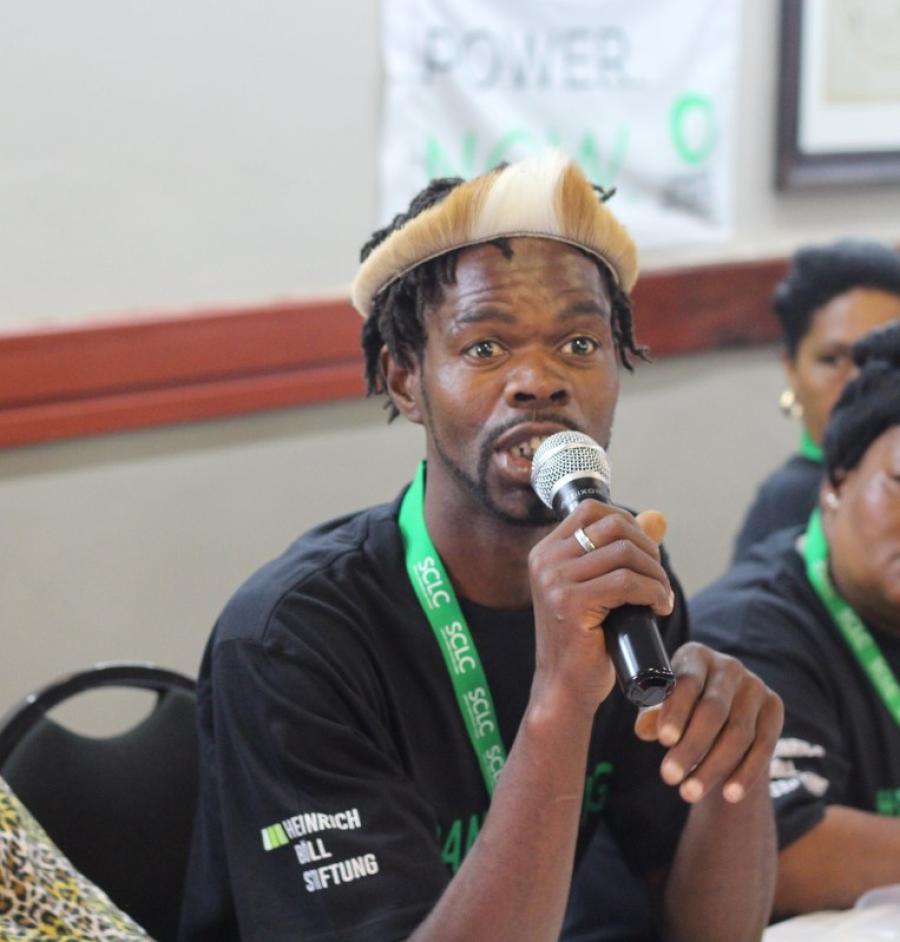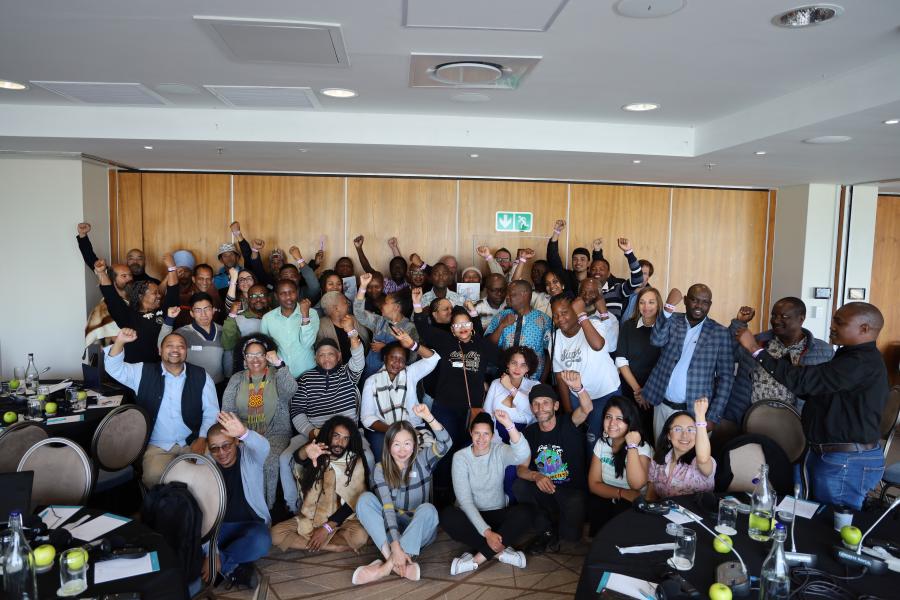In March 24 elected representatives of the San peoples in South Africa, known as the South African San Council, and the Council for Scientific and Industrial Research (CSIR), an arm of the South African government, jointly announced that they had reached an agreement to share the benefits projected to result from the development of a potential blockbuster diet pill. This agreement was the dramatic culmination of a highly publicized confrontation between representatives of the San people and CSIR and a series of negotiations that had begun less than two years earlier. The agreement is a landmark for all indigenous peoples, not only because it provides the San with significant monetary benefits for the commercial exploitation of the intellectual property that is inherent in their traditional knowledge, but also because it serves as a testament to the enduring value of the San cultural heritage.
United States-based Pfizer, the largest pharmaceutical company in the world, had undertaken the development and marketing of the projected diet pill pursuant to a licensing agreement with United Kingdom-based pharmaceutical company Phytopharm, which has a licensing agreement with CSIR to jointly commercially exploit any products, including the diet pill, resulting from a bioactive compound that has been patented by CSIR. This patented bioactive compound, referred to as P57, was derived from the Hoodia plant.
Just before this issue of CSQ went to press, the Johannesburg Mail and Guardian reported that Pfizer had pulled out of the project. Human rights lawyer Roger Chennels, who has represented the ‡Khomani San, told the newspaper that Phytopharm would have to find another partner company for the project to continue, but said he was confident the drug trials would continue.
The Hoodia is a cactus-like plant that is indigenous to southern Africa. The several patented and patentable discoveries derived from the P57 appetite suppressant agent can be traced to documentation of traditional uses of the Hoodia plant by the San, who have used it for generations as a substitute for food and water during prolonged hunting and gathering expeditions in the semi-arid parts of southern Africa. The characteristic cultural practices of the San’s hunting and gathering economy throughout southern Africa have been documented back at least 25,000 years.
Today about 100,000 San—also sometimes referred to as “Bushmen”—reside in South Africa, Namibia, and Botswana. The persistence of the San and their ability to exploit their traditional heritage in order to preserve their identity and secure their participation in the modern world is remarkable. They were persecuted for centuries by non-San, especially European colonists and their descendants, who mounted numerous genocidal campaigns. They also were unable to self-identify in South Africa as San throughout nearly all of the last half of the 20th century due to the apartheid-inspired Coloured Registration Act, which required all indigenous peoples to register as either Bantu or “coloured,” and thus by decree forced the near extinction of the San in South Africa. It is therefore not surprising that as recently as June 2001, when the chief executive officer of Phytopharm was asked about the role of the San in the development of the P57 discoveries, he reportedly stated that he had been led to believe that they had “died out,” and, therefore, implicitly, that there were no San left to assert whatever rights they might have to share in the benefits resulting from the commercial exploitation of their traditional knowledge. This comment and related publicity stirred the San and their representatives to action.
In March 1999, the ‡Khomani San finished negotiating the first phase of the first successful aboriginal land claim in southern Africa (see CSQ 26:1). This land claim, which was officially signed on May 23, 2002, provided 65,000 hectares to the San, plus extensive land use rights in the Kgalagadi Transfrontier Park.
Fresh on the heels of this land claim success, and spurred by the publicity of a potential blockbuster drug developed by the South African government that was inspired by documentation of traditional San knowledge, Chennels, who represented the ‡Khomani San in the land claim, arranged a meeting in June 2001 with CSIR on behalf of the Working Group of Indigenous Minorities in Southern Africa (WIMSA). WIMSA is the umbrella organization for San representatives throughout Namibia, Botswana, and South Africa.
On November 27, 2001, the South African San Council was formed under the auspices of WIMSA, and only two days later WIMSA confirmed that an agreement in principle had been reached between CSIR and the San Council, WIMSA’s representative in South Africa, regarding the San’s rights with respect to the P57 project. On February 1, 2002, CSIR and the San Council entered into a confidential Memorandum of Understanding, which, after further negotiations, resulted in the official benefit-sharing agreement that was announced this March.
This benefit-sharing agreement between the San and CSIR is considered by many experts as a ground-breaking intellectual property rights agreement. It is the first time in history that one group of indigenous people whose ancestors have resided for millenia throughout a large geographical region will receive significant benefits from the exploitation of their traditional knowledge by a dominant nation state—the Republic of South Africa—and multinational corporate interests in the pharmaceutical industry.
Under the terms of the agreement, CSIR will pay the San eight percent of all milestone payments it receives from Phytopharm, and six percent of all royalties that CSIR receives after this potential blockbuster drug is commercially available. This benefit-sharing arrangement ensures that the San will likely receive monetary benefits in the near future that exceed U.S. $1 million, and that they could receive considerably more over time. Pursuant to the terms of the agreement, the income that is earmarked for the San will be deposited into the San Hoodia Benefit-Sharing Trust. As described in a March 24 media release from the South African San Council and CSIR, the trust has among its aims “to use income received from the CSIR for general upliftment, development and training of the San Community as approved by the Board of Trustees.”
Chennels said it is now more likely that future bioprospecting successes will result from the San’s extensive knowledge of the human uses of plants indigenous to southern Africa and that the San will equitably share in the benefits from such successes. He also expressed optimism that this accord will serve as a sound foundation for future collaboration between nation states, corporate interests, and indigenous peoples throughout the world.
David Stephenson practices intellectual property law in Denver, Colorado, with Fairfield and Woods, P.C. He is also president-elect of the High Plains Society for Applied Anthropology. He recently co-authored a case study (with the South African San Council and First Peoples Worldwide) that analyzes the legal, political, socioeconomic, and cultural dynamics underlying the Hoodia benefit-sharing agreement. The author is grateful to First Peoples Worldwide, which, with the agreement and assistance of the Working Group of Indigenous Minorities in South Africa and its affiliate the South African San Institute, commissioned a comprehensive case study concerning the benefit-sharing agreement described in this article. Funding for the case study was provided by the Rockefeller Foundation.
References & further reading
Barnett, A. (2002, April. 5). Fat Windfall for the San. Mail & Guardian (Johannesburg, South Africa). Retrieved April 14, 2003, from http://www.mg.co.za/.
Barnett, A. (2001, June 17). In Africa the Hoodia cactus keeps men alive. Now secret is “stolen” to make us thin. The Observer (London). Retrieved April 14, 2003.
Brormann, M. (2002). Political Action Movements: WIMSA. Cultural Survival Quarterly, 26:1, pp 45-47.
Chennells, R. (2002). The ‡Khomani San Land Claim. Cultural Survival Quarterly 26:1, pp 51-53.
Crawhall, N. (2002). Reclaiming Language and Identity. Cultural Survival Quarterly 26:1, pp 49-51.
Gall, S. (2001). The Bushmen of Southern Africa: Slaughter of the Innocent. London: Pimlico.
Lee, R.B., Hitchcock, R., & Biesele, M. (2002). Foragers to First Peoples: The Kalahari San. Cultural Survival Quarterly 26:1, pp 9-12.
Stephenson, D.J., Jr., The South African San Council, & First Peoples Worldwide (2003). The Patenting of P57 and The Intellectual Property Rights of The San Peoples of Southern Africa. Last retrieved on July 8, 2003.
Wynberg, R. (2003). A Review of Benefit-Sharing Arrangements for Biodiversity Prospecting in South Africa. Pretoria, South Africa: IUCN.



